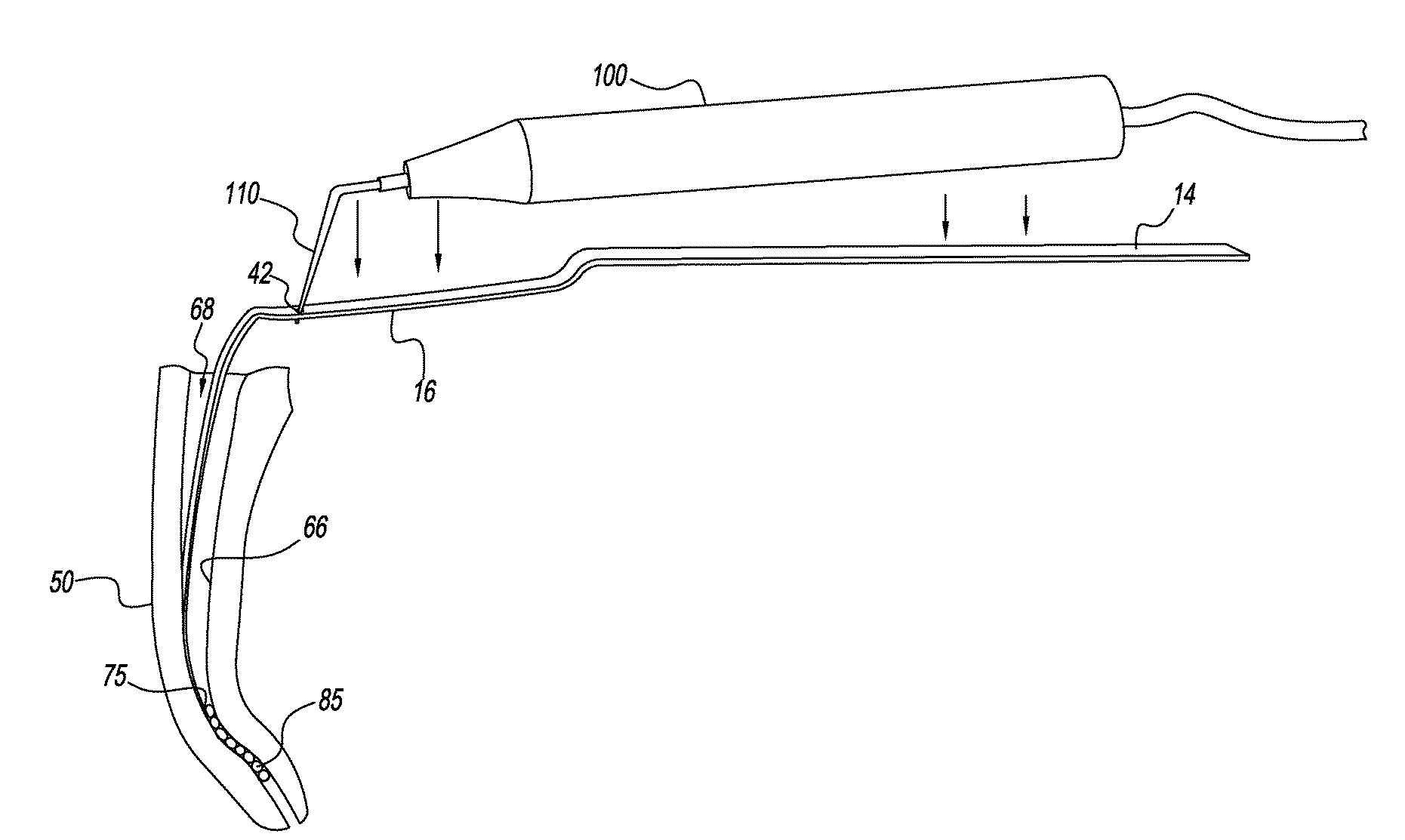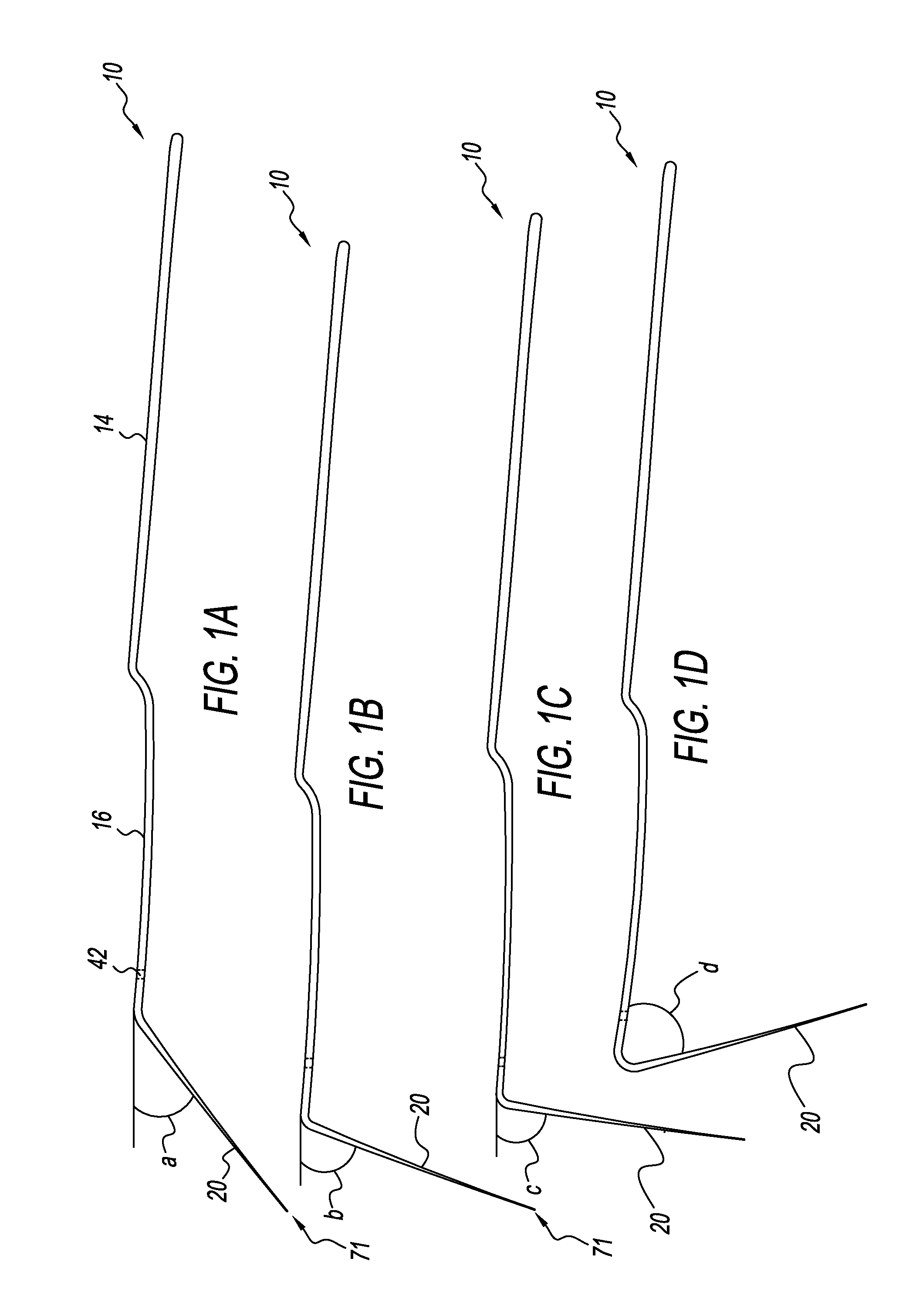Root canal probe tool and method of removing a broken instrument fragment from a root canal
a technology of root canal and probe tool, which is applied in the field of root canal therapy, can solve the problems of zipping or stripping perforation, potentially damaging vibration of tooth transfer along the entire length of the tool bit or end piece, etc., and achieve the effect of quick and efficient freeing of fragments
- Summary
- Abstract
- Description
- Claims
- Application Information
AI Technical Summary
Benefits of technology
Problems solved by technology
Method used
Image
Examples
Embodiment Construction
[0026]With reference to drawing FIG. 3A, a file or instrument fragment 85 is shown wedged within a root canal 68. X-ray or other imaging methods together with direct visual magnifying instruments may be used to locate the broken fragment 85. The dental clinician can then select a probe tool from among a set of inventive probe tools 10, typical examples of which are shown in FIGS. 1A, 1B, 1C, 1D and 2, to physically locate and attempt to free fragment 85.
[0027]Each probe tool, generally referred to throughout the drawing by the numeral 10, comprises a handle end 14 and a shank end 16 extending to a point end 71. The shank end 16 extends straight out from handle 14 to a flexible planar body or end probe 20 which terminates after point 71. The overall length of a probe tool 10 is approximately 150 mm (5.9″). End probe 20 is located at the distal end of shank 16 of probe tool 10. The overall length of end probe 20—the flexible planar body—is approximately 32 mm (1.26″).
[0028]Aperture 42...
PUM
 Login to View More
Login to View More Abstract
Description
Claims
Application Information
 Login to View More
Login to View More - R&D
- Intellectual Property
- Life Sciences
- Materials
- Tech Scout
- Unparalleled Data Quality
- Higher Quality Content
- 60% Fewer Hallucinations
Browse by: Latest US Patents, China's latest patents, Technical Efficacy Thesaurus, Application Domain, Technology Topic, Popular Technical Reports.
© 2025 PatSnap. All rights reserved.Legal|Privacy policy|Modern Slavery Act Transparency Statement|Sitemap|About US| Contact US: help@patsnap.com



